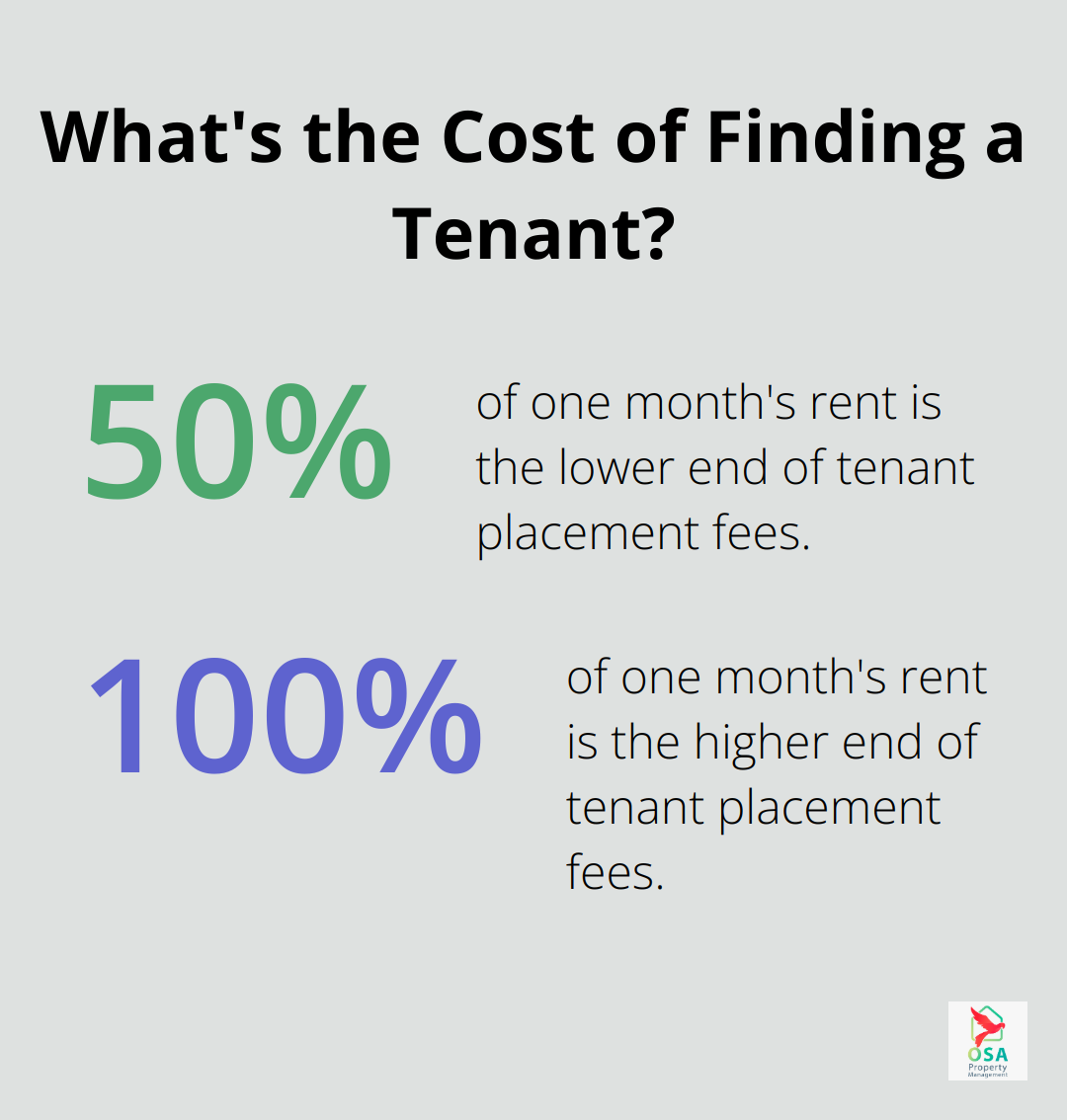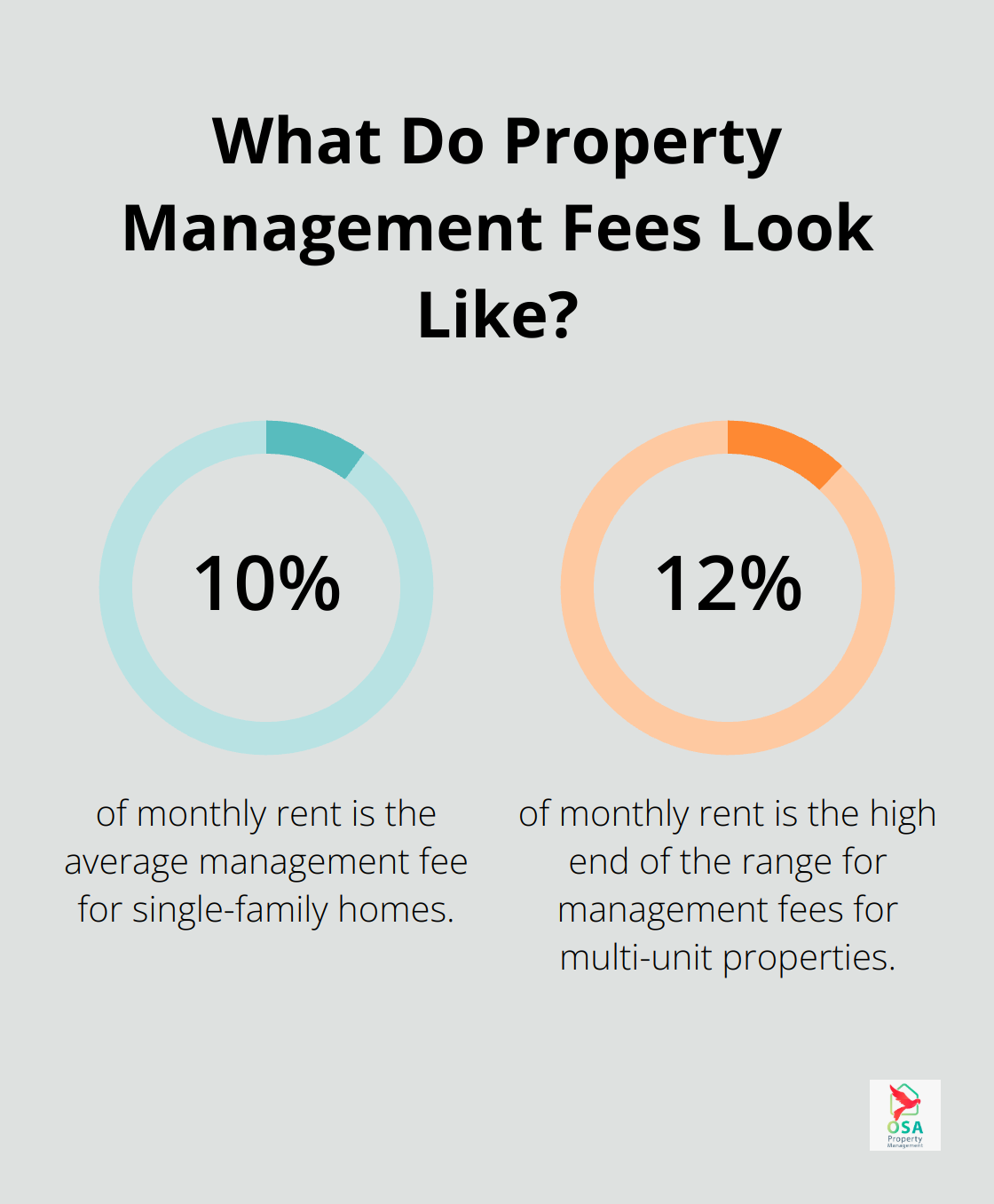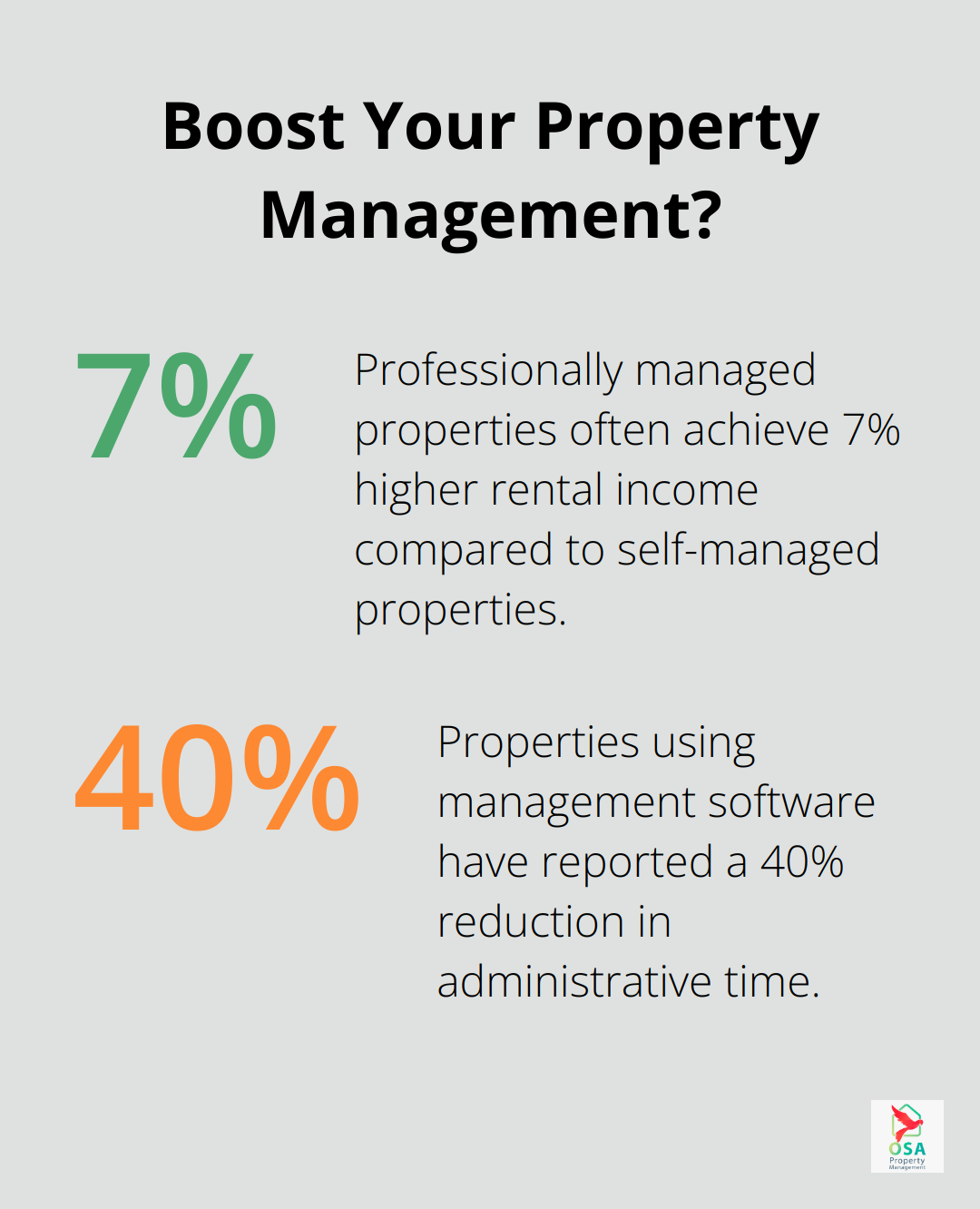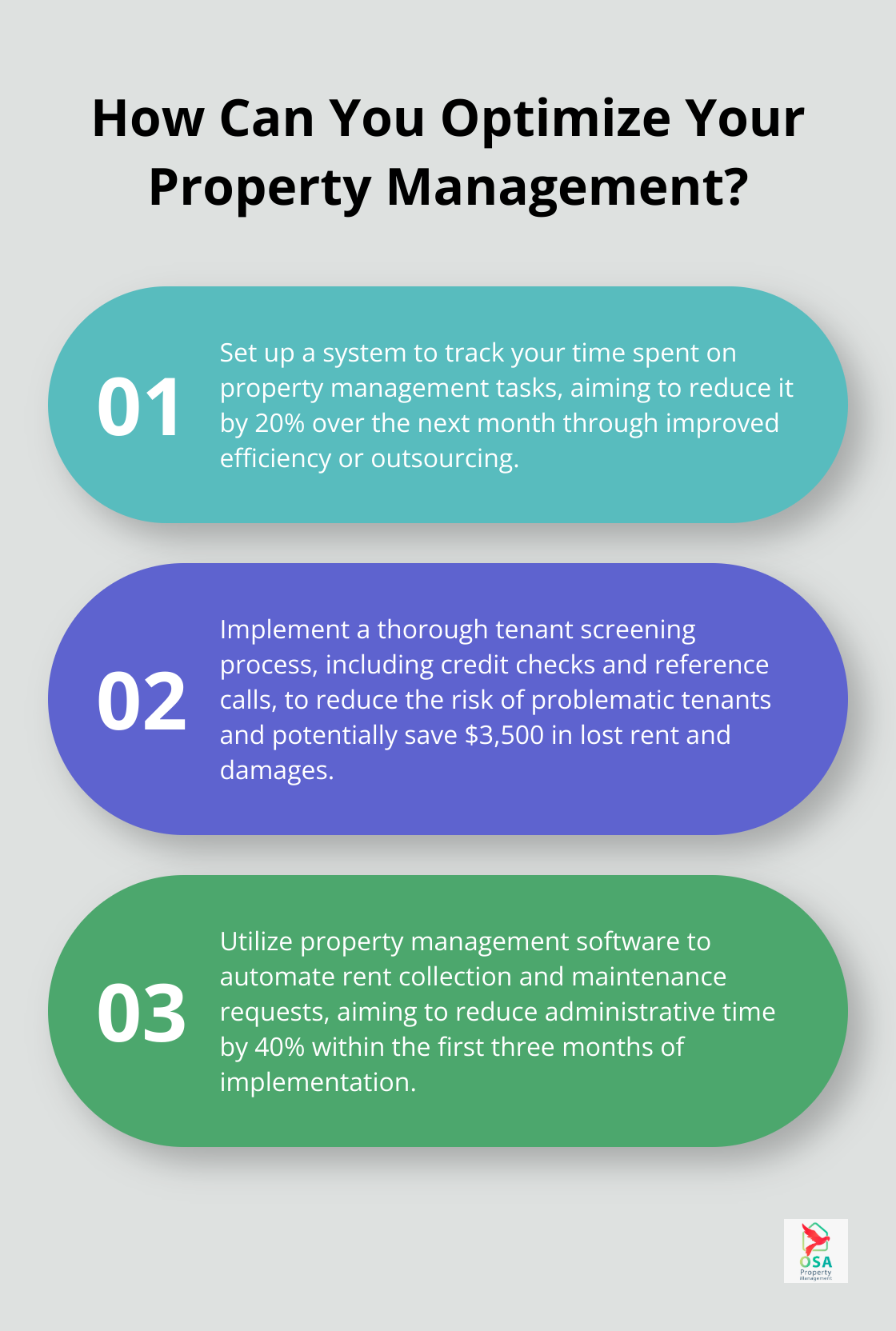At Osa Property Management, we often hear property owners ask, “How much does a rental management company charge?” It’s a crucial question for anyone considering professional property management.
This blog post will break down the typical fee structures, explore factors that influence costs, and compare professional management with self-management options.
What Do Rental Management Companies Charge?
Fee Structures: Flat Rate vs. Percentage-Based
Rental management companies typically use two main fee structures: flat rate and percentage-based. Flat rate fees range from $100 to $200 per property monthly. Percentage-based fees calculate as a portion of the monthly rent collected, typically ranging from 8% to 12%. For instance, a property renting for $1,500 per month might incur management fees between $120 and $180.
Average Fee Ranges for Different Property Types
Single-family homes generally have lower management fees compared to multi-unit properties or vacation rentals. A large number of single-family dwellings across the U.S. are non-owner occupied.

Multi-unit properties see fees ranging from 4% to 12%, depending on unit numbers and provided services. Vacation rentals command higher fees (often 20% to 30% of rental income) due to increased workload from frequent tenant turnover and marketing needs.
Additional Fees and Services
Property owners should prepare for potential additional charges beyond the base management fee. These may include:
- Tenant placement fees: 50% to 100% of one month’s rent.
- Lease renewal fees: Typically $200-$300 per renewal.
- Maintenance markup: Some companies add 10-20% on top of maintenance costs.
- Vacancy fees: A flat rate (around $50-$100) during unoccupied periods.
Transparency in Fee Structures
Property owners should discuss potential fees upfront with any management company under consideration. Transparency in fee structures helps build trust and ensures both parties understand the financial arrangement.
Customized Service Packages
Some management companies offer customized service packages to meet specific property owner needs. These tailored solutions can help optimize costs while providing necessary services.
As we move forward, let’s explore the factors that influence rental management costs, including property location, size, and required service levels.
What Impacts Rental Management Costs?
Location: A Key Factor
Location significantly influences management fees. Rental management companies typically use two main fee structures: flat rate and percentage-based. Flat rate fees range from $100 to $200 per property monthly. Managing a property in San José, Costa Rica, typically costs more than in a smaller town like Uvita. This stems from increased competition, higher operational costs, and more intricate local laws in urban centers.
Property Type and Size Matter
The type and size of your rental property directly affect management costs. Single-family homes generally have lower fees compared to multi-unit buildings or vacation rentals. Management fees for single-family homes average 8-10% of monthly rent, while multi-unit properties can range from 4-12% (depending on the number of units).

Vacation rentals in popular Costa Rican destinations (such as Manuel Antonio or Jaco) often incur higher fees. This increase results from the additional workload associated with frequent turnovers, marketing, and guest services.
Service Level Requirements
The extent of services you need from a management company significantly affects costs. Basic services like rent collection and maintenance coordination cost less than full-service packages that include marketing, financial reporting, and property improvements.
Some companies offer tailored service packages. A basic package for a long-term rental in Tarcoles might cost less than a comprehensive package for a luxury vacation home in Dominical that requires extensive marketing and guest services.
Property Condition and Maintenance Needs
The condition of your property and its maintenance requirements can impact management costs. Older properties or those in need of frequent repairs may incur higher fees due to the increased time and resources needed for upkeep. Some management companies charge additional fees for coordinating major renovations or handling emergency repairs.
Properties in coastal areas like Ojochal often require more frequent maintenance due to the effects of salt air and humidity, which can influence overall management costs.
These factors help property owners make informed decisions when selecting a management company and negotiating fees. The next section will compare the costs and benefits of DIY management versus professional property management services.
DIY vs Professional Management Costs
Time Investment Considerations
Self-management of rental properties requires a substantial time commitment. Property owners who choose to manage their rentals themselves often underestimate the time needed for tasks such as marketing, tenant screening, maintenance coordination, and legal compliance. A recent survey indicates that landlords dedicate an average of 20 hours per month to property management tasks for a single unit.
Hidden Costs of Self-Management
While avoiding management fees might appear cost-effective, self-management often leads to unexpected expenses. These can include marketing costs, legal fees for lease preparation, and potential losses from ineffective tenant screening. The average cost of a problematic tenant can exceed $3,500 (considering lost rent and property damage).
Financial Benefits of Professional Management
Professional property management can increase profitability. Property managers possess the expertise to optimize rental rates, minimize vacancy periods, and implement effective marketing strategies. Research shows that professionally managed properties often achieve 7% higher rental income compared to self-managed properties.
Risk Mitigation and Legal Compliance
Navigating Costa Rica’s rental laws presents challenges for individual property owners. Professional management companies stay current with local regulations, helping property owners avoid costly legal issues. They also implement established processes for tenant screening, which reduces the risk of problematic renters. Long-term residential leases in Costa Rica have a minimum duration of 3 years by law, even if a contract specifies a shorter period.
Technology and Efficiency Advantages
Professional management companies utilize advanced property management software and systems. These tools streamline operations, from rent collection to maintenance requests, offering a level of convenience that’s difficult to match with self-management. Properties using management software have reported a 40% reduction in administrative time.

Final Thoughts
Property owners in Costa Rica must carefully consider how much a rental management company charges when making their decision. Professional management fees typically range from 8% to 12% of monthly rent, with additional charges for specific services. Osa Property Management offers expertise in navigating Costa Rica’s unique rental regulations and property management landscape, which can lead to increased rental income and reduced vacancy rates.

When selecting a rental management company, property owners should look beyond fee structures. A proven track record, positive client testimonials, and a comprehensive understanding of the local market are important factors to consider. Transparency in fee structures and clear communication about services provided indicate a reliable management partner.
The right rental management company should align with your property goals, whether you own a long-term rental or a luxury vacation home. Professional services often justify the investment through time saved and potential increases in property performance. Careful consideration of your options and understanding the full scope of services offered will help you maximize your property’s potential.

